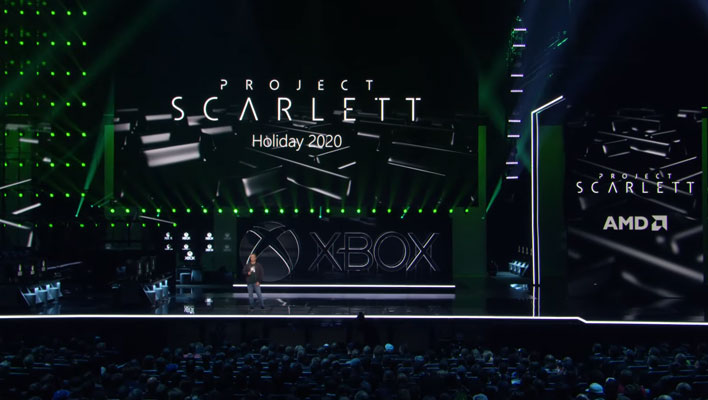Microsoft Targets 120 FPS And Ray-Traced Gaming For Xbox Project Scarlett

Even though Microsoft is not sharing many concrete details about Project Scarlett, the codename for its next-generation flagship game console, the company is certainly building up expectations. It seems Microsoft has some clear goals in mind, some of which it has been sharing lately. So, what do we know about Microsoft's plans and goals?
That depends on who is doing the talking. Last week, Xbox boss Phil Spencer made it clear Microsoft's goal is to be competitive with Sony's PlayStation 5 console in power and pricing right out of the gate. What was not really the case when the Xbox One debuted.
"I would say a learning from the Xbox One generation is we will not be out of position on power or price. If you remember the beginning of this generation we were a hundred more expensive and yes, we were less powerful. And we started Project Scarlett with this leadership team in place with a goal of having market success," Spencer told The Verge.
Following up on those comments, Microsoft's Aaron Greenberg spoke with Kotaku about a number of topics at X019, the annual Xbox fan festival that is underway in London at the Copper Box Arena. One of the things Greenberg touched on was the performance expectations.
"Yes, we’ll have great graphical performance, but things like speed will be a big factor with integrating the SSD. We can support increased CPU, higher framerates, so 120 FPS, having things like DirectX ray tracing that’s never really existed on a console," Greenberg.
He basically reiterated what Microsoft has said in the past, while still being mum on the specifics. For example, we also know that Microsoft is targeting 8K gameplay to some extent. However, the desire to push 120 FPS is almost definitely related to 1080p gaming. It's certainly no realistic to think that even a next-gen game console could hit 120 FPs at 8K, and getting there at 4K seems like a stretch as well.

At 1080p, however, Project Scarlett should be zippy. It will be running on custom silicon from AMD based on the company's Zen 2 CPU architecture and Navi graphics, the latter of which is presumed to bring hardware-based ray tracing into the fold. Sony has already confirmed as much for the PS5, and while Microsoft has not specifically said ray tracing will be supported at the hardware level (versus software support), it would surprising if the GPU in Project Scarlett lagged behind.
Greenberg also noted that the same team responsible for the Xbox One X is building Project Scarlett, in case you were wondering (this was also revealed by Spencer at E3). The Xbox One X upped the power envelope from the Xbox One in part to enable 4K gameplay. For this next round, it would not be surprising to us if ray tracing support dominated the discussion, though it will depend in large part on both the console's actual capabilities and developer support.
Both Project Scarlett and the PS5 are slated to launch in holiday 2020, so we have a full year to speculate on how the two consoles will compete with one another.

